| Infrequently Seen | |
| Has Nested near Park |
Spring: Mississippi Kites have expanded their breeding range into the Washington metro area. The first breeding record in the area was in 1995 in Woodbridge, Virginia. During the ensuing years, more kites have arrived, and they have slowly moved their breeding activity into Alexandria and Arlington. The first sighting at Monticello Park was in May, 2016, and kites were seen flying over the park on a few occasions in May, 2017. They had nested in the neighborhood next to Monticello in previous years, and in 2017, a pair produced a chick in a nest a block up the hill from the park. This nest was thought to be the most northerly successful nest for Mississippi Kites that year in the Washington area.
Fall: When Mississippi Kites nest in the neighborhood, you might see one in or near the park at any time until they take off on the their migration south, which usually occurs around the middle of September. You can see either adults or one of the streak-breasted juvenile birds.
Where to See Them in the Park
Mississippi Kites are sometimes seen in the air over the park. There is no special way to look for them. You are more likely to see one if you are on Beverley Drive near the front entrance to the park.
Physical Description

Adult Mississippi Kites have a light gray head and pale gray underparts. Their eyes are red with a black border, and the tail is black.
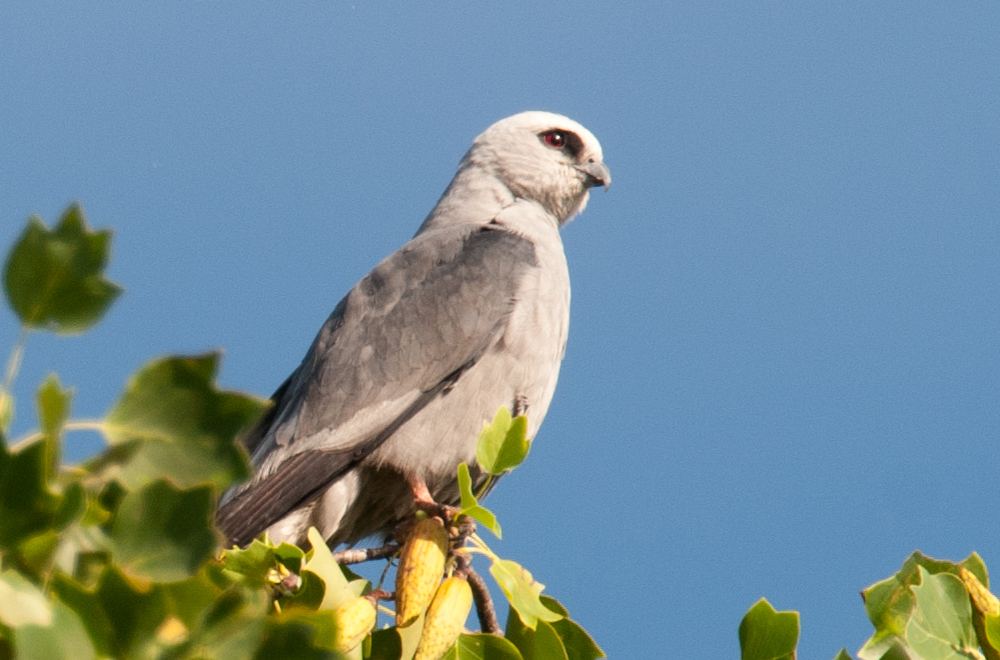
The back is darker gray than the underparts.
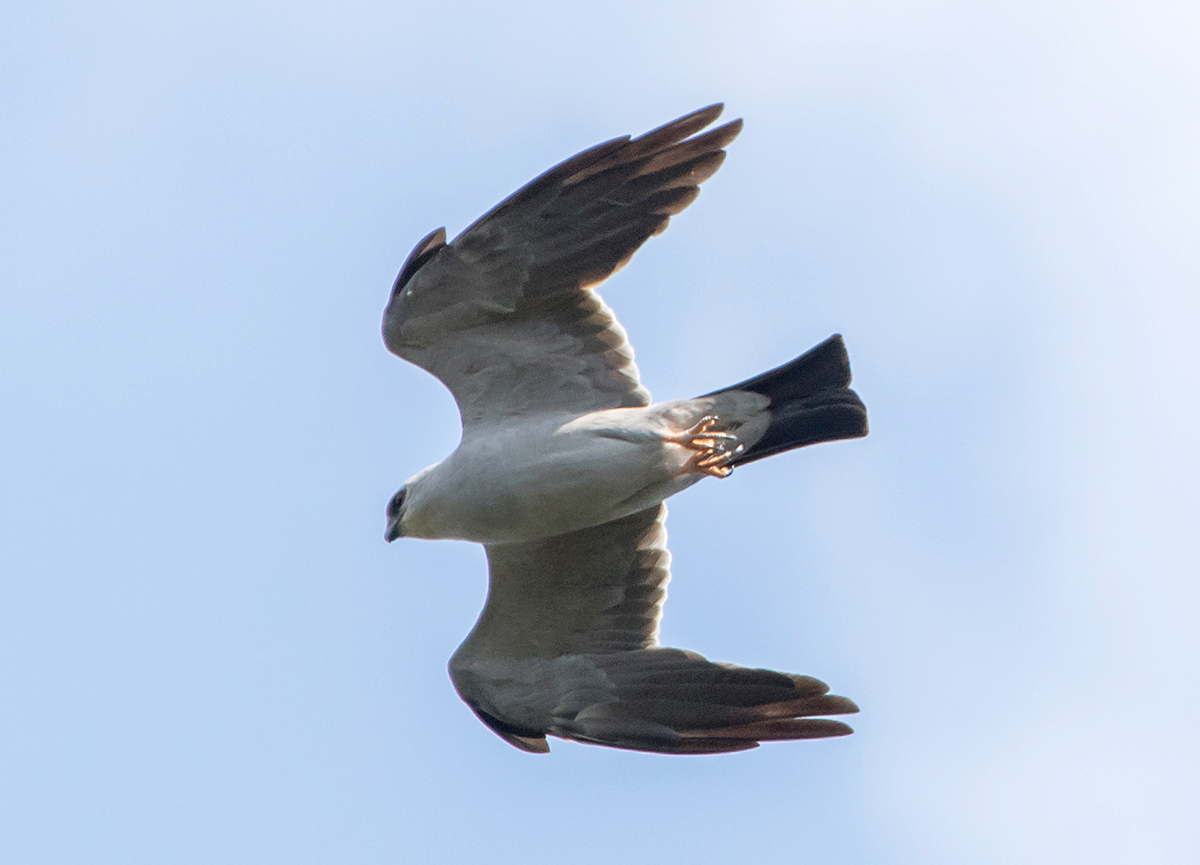
The two sexes can be difficult to tell apart in the field. The male's underparts and underwings do not appear to have any markings.
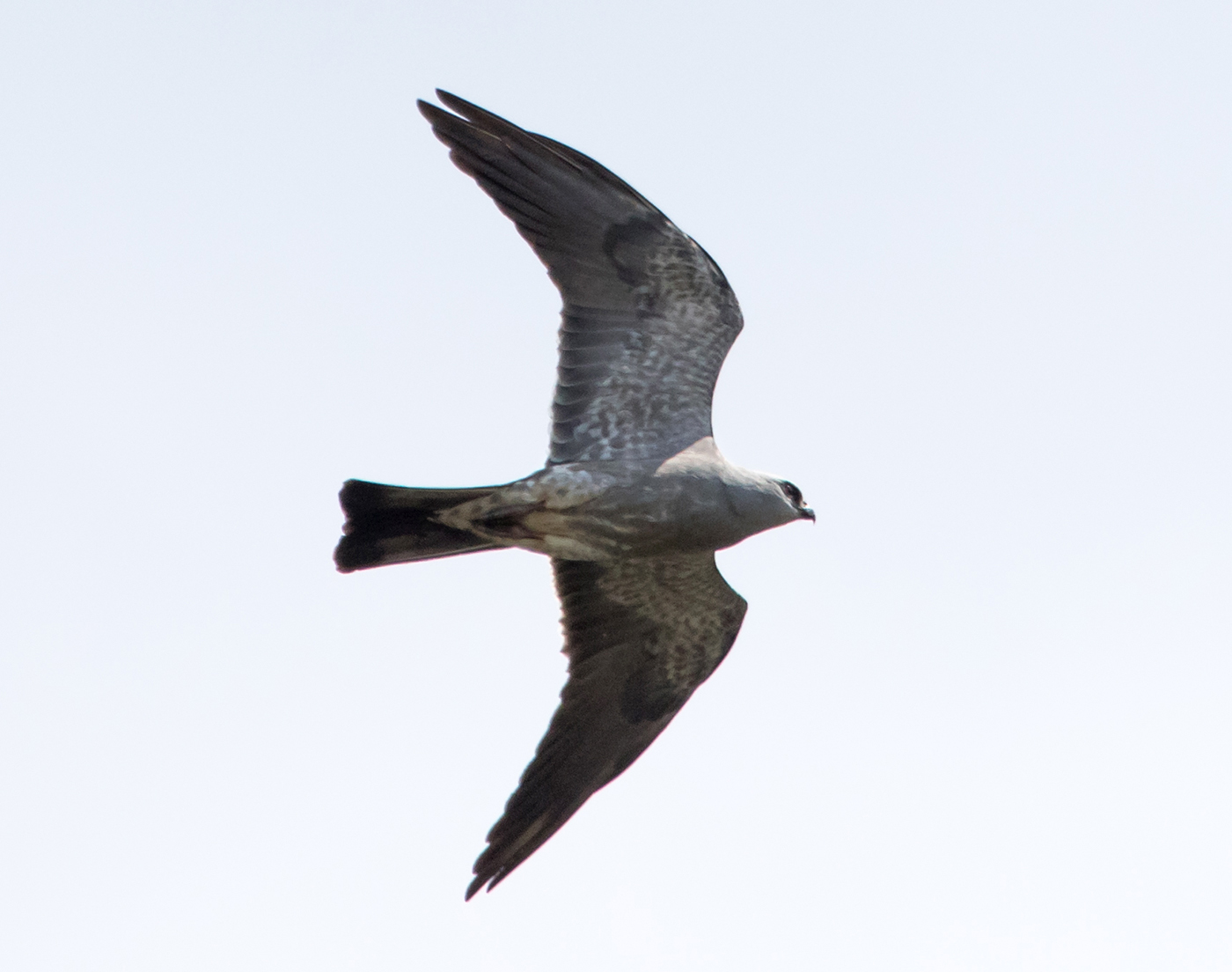
The adult female's underparts and underwings are a darker mottled gray. Mississippi Kites are graceful flyers, with wings that are long and pointed. The wings are much narrower than the wings of Buteos, such as Red-tailed and Red-shouldered Hawks, and they are much longer than the wings of Accipiters, such as Sharp-shinned and Cooper's Hawks.
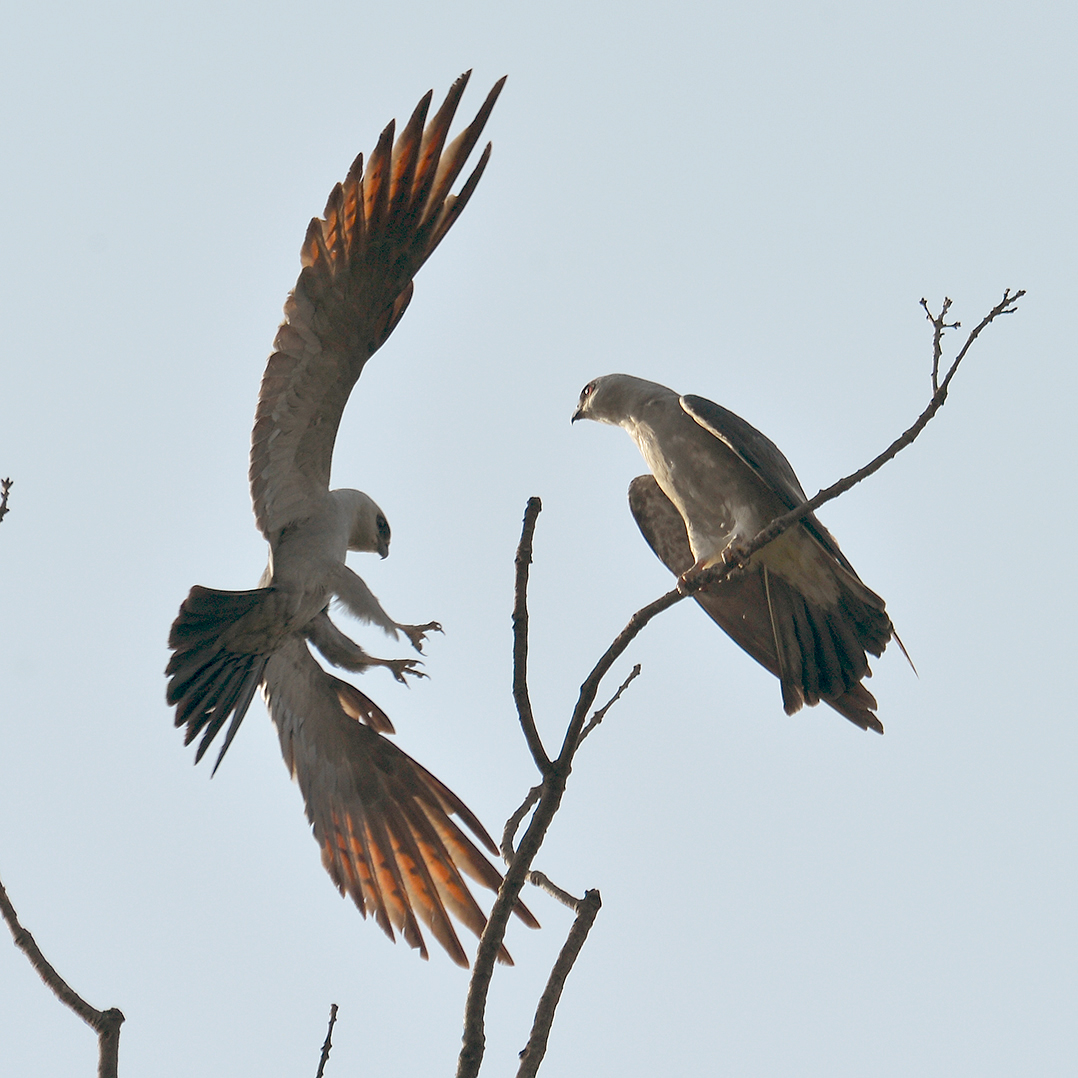
Both the male and the female have a solid dark tail and rufous on the outer part of their wings. The kites have sometimes been seen preening in trees near the park. This video shows a female preening. The kites also have been seen copulating in trees near the park.
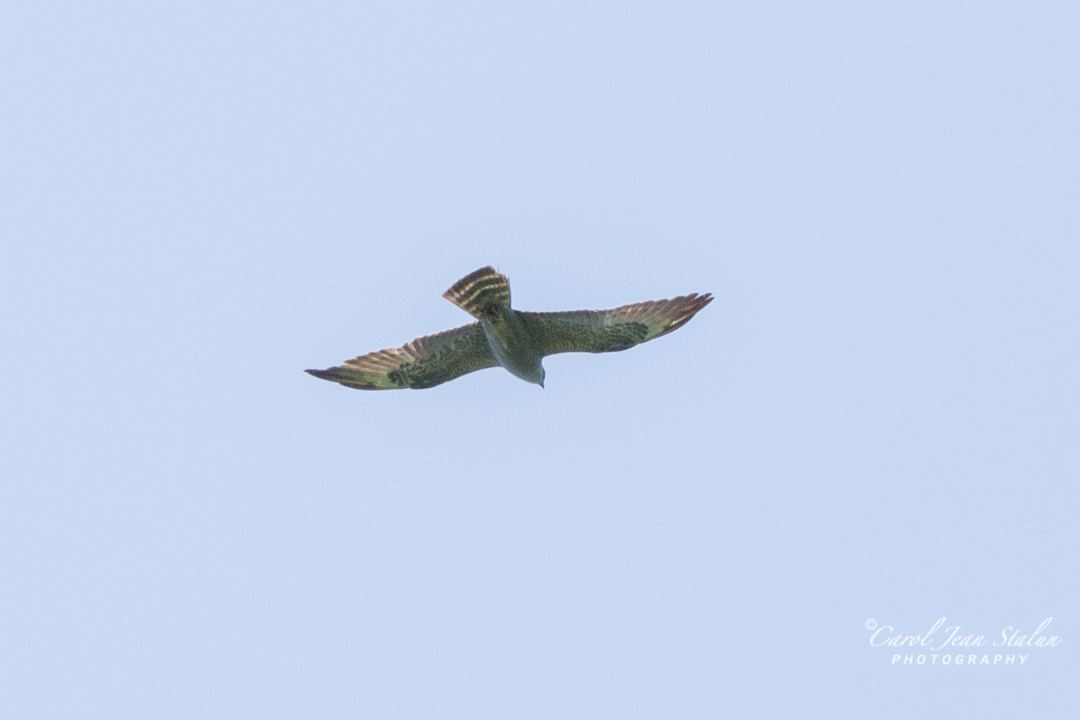
Immature birds are mottled underneath, and their black tail has white bars. The rufous on their wings is not as pronounced.
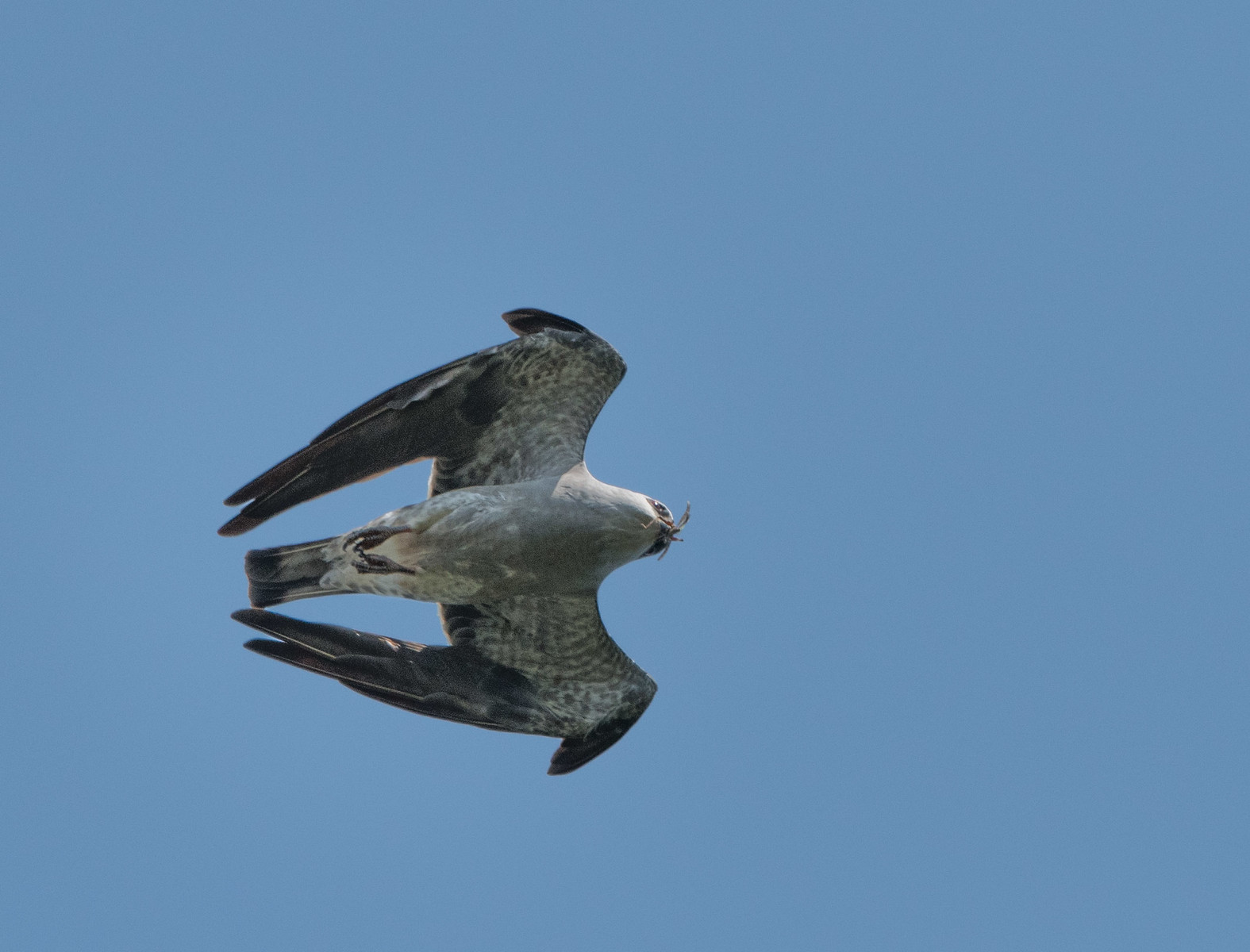
The diet of Mississippi Kites is composed mainly of insects. The adults catch dragonflies, cicadas, and other large insects and bring them to the nest to feed their young. They catch most of the insects in the air with their long, agile legs.
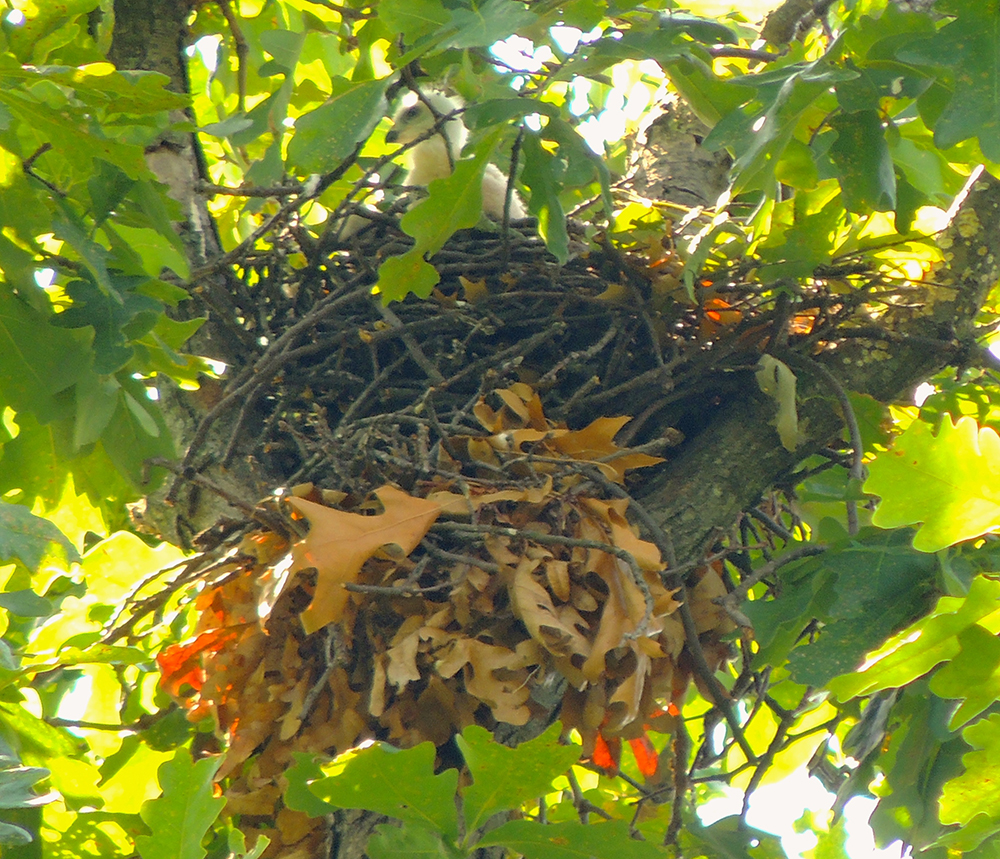
Mississippi Kites build stick nests on a platform covered with leaves. They lay 1 to 3 eggs which are incubated for about a month. Hatchlings are little white balls of fluff with a short black bill. At the nest near Monticello, one of the hatchlings was found dead at the base of the tree. It was less than 4 inches long.

As the nestlings grow, their downy white feathers are replaced by darker feathers. The young generally stay in the nest for 25 to 30 days, at which point they start to move to nearby tree limbs. They start to fly about five days after leaving the nest. A pair of Mississippi Kites came to the same neighborhood in 2018. The pair built a nest, but they later abandoned it. Here are video links to the two kites mating and one of the kites preening.
Vocalizations
The call of the Mississippi Kite is a plaintive two-note whistle. They can be quite vocal, but they are quieter when incubating or when young are in the nest. They often are harassed by crows, and they attract less attention when they vocalize less.
Hear the calls of the Mississippi Kite.
Notes
A video about the Monticello Mississippi Kites can be seen on YouTube. After the nesting season, Mississippi Kites disperse and head to their wintering grounds in central South America. They form large flocks and migrate together. Along their migratory route in places such as Panama, sometimes thousands swirl in the air together. The children's toy called a kite was named after the bird. The toys were thought to resemble the way the bird hovers and flutters in the air.
Origin of Names
Common Names: Mississippi for the state where the first specimen was found. Kite possibly from the Anglo-Saxon cyta, which means kite.
Genus Name: Ictinia is Greek for kite.
Species Name: Mississippiensis means from Mississippi.
Mississippi Kite video footage
Return to the Index
